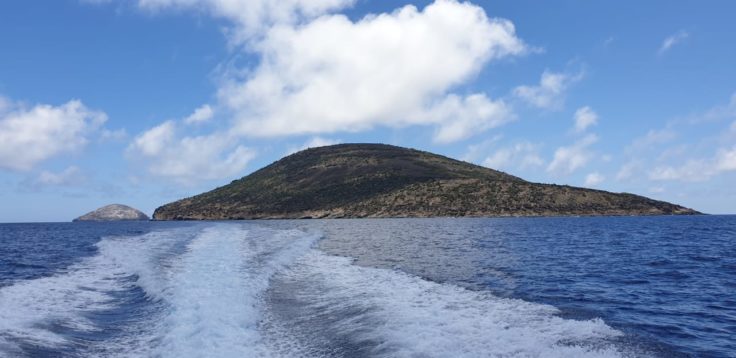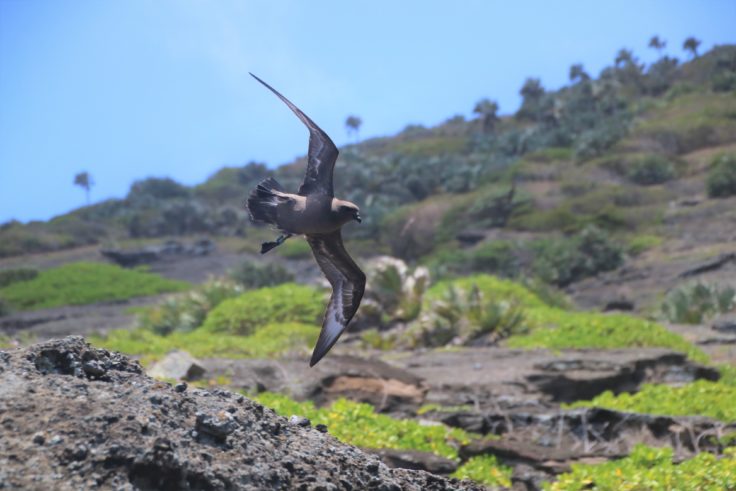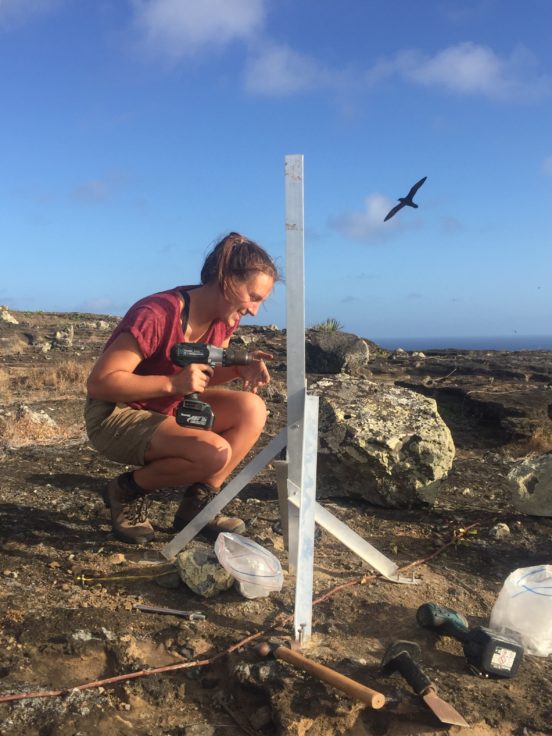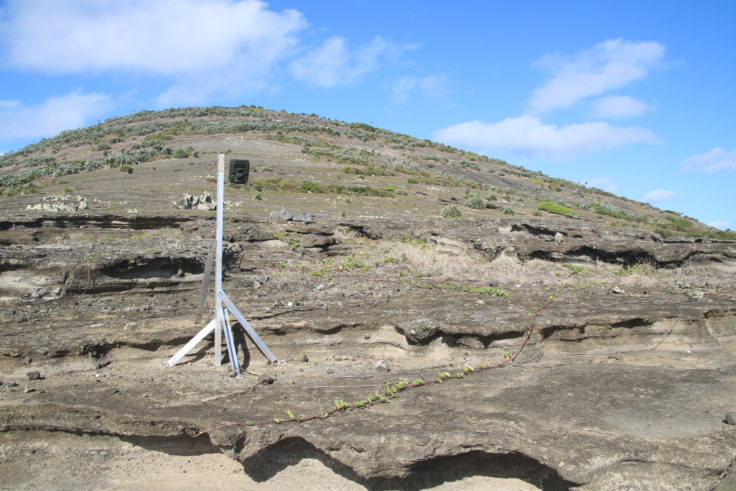Guest Blog – Petrels on Round Island, Mauritius
13 March, 2020
PhD student Kirsty Franklin reports on her fieldwork on Round Island, Mauritius, working in collaboration with British Antarctic Survey. In the blog below, Kirsty shares how she is going to remotely monitor the island’s enigmatic petrels:
On a small tropical island off the coast of mainland Mauritius can be found an enigmatic population of Pterodroma petrels, known as the Round Island petrel. Since their official discovery in 1943, this petrel has been a source of much taxonomic confusion. The birds have a range of different colour morphs and, whilst originally identified as Trindade petrels (Pterodroma arminjoniana), it has relatively recently been revealed that this population is in fact a mixed, hybridizing population with at least two additional species – Kermadec (P. neglecta) and Herald petrels (P. heraldica).
I had the privilege of seeing these birds up close, as I travelled to Round Island to spend two months conducting fieldwork for my BOU-funded PhD.

You can find these Pterodroma petrels on Round Island at any time, although the numbers in which they appear fluctuates across the year. This relates to a peak in the breeding period found in the months August through to October. The breeding effort of these petrels is monitored through routine petrel surveys, which I had the pleasure of helping with during my time on the island. This involves visiting known nesting areas and fitting petrels with rings or recording them as recaptures, and noting their breeding status (including number of eggs, chicks and fledglings).

Through a long-term collaborative study on these petrels, the Mauritian Wildlife Foundation, National Parks and Conservation Service (Government of Mauritius) and ZSL have revealed that petrel hatching success is actually higher for eggs laid in the off-peak breeding period. This has only been documented at the population level because it is not possible to follow a nest attempt from the egg stage through to fledging.
For my PhD, I want to test the utility of time-lapse cameras for monitoring individual petrel breeding performance and to capture this seasonal variation in nesting success. My first stint on the island involved identifying potential camera sites, where the contents of multiple nests could be viewed and where the sun did not directly shine on the camera face – not an easy job! To help me in my efforts I also used the historical productivity data collated from the petrel surveys, to choose nest sites that had been used relatively frequently in the past few years, in the hope that they would be used again.

In order for the cameras to withstand the strong winds they might experience during the tropical cyclone season, I trialled multiple camera stand designs. The end design consisted of a camera-trap attached to a vertical aluminium pole by a stainless steel bracket, the former being dug into the rock, and supported by four additional metal legs each drilled into the ground.
In total, I deployed 10 cameras during my time on the island and the idea is that these cameras will be left in the field to take photos for the duration of my PhD (2019-2021). The cameras are programmed to take one image every hour, which should allow the identification of key phenological dates (e.g. egg-laying, hatching, chick fledging) and the recording of nest attendance, and finally nest success (and in cases of failure, potentially what caused the nest to fail).

For now, I look forward seeing the many images that the cameras will reveal. I wish to thank everyone involved and for allowing this project take place: MWF, NPCS, my wonderful supervisors (Jenny Gill and Simon Butler from University of East Anglia, Malcolm Nicoll and Ken Norris from Zoological Society of London, and Norman Ratcliffe from British Antarctic Survey), and in particular Round Island warden Johannes Chambon and fellow PhD student Max Tercel for their invaluable help in the field.
My PhD is the first to be funded by the British Ornithological Union’s (BOU) John and Pat Warham Studentship, based at the University of East Anglia, in collaboration with Zoological Society of London and British Antarctic Survey.
UPDATE 14/12/2020 – You can now help Kirsty and the team spot Round Island Petrels in time-lapse photographs here!